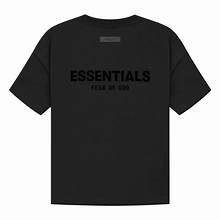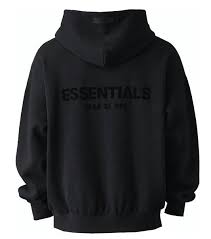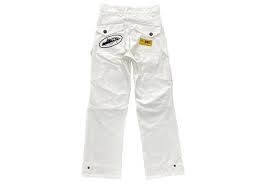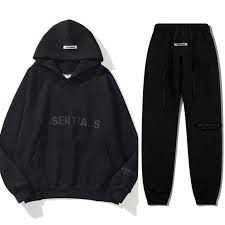In today’s fast-paced world, knowing your essentials can simplify your life, boost efficiency, and reduce stress. Whether it’s the daily essentials that keep your day running smoothly or personal essentials that support your health and hygiene, understanding what qualifies as essential is key to smart living.
Let’s dive deep into everything you need to know about essentials — what they are, why they matter, how to categorize them, and how to build your own tailored list of must-haves.
What Are Essentials? A Simple Breakdown
The term Essentials refers to items or resources that are absolutely necessary for day-to-day living. These can vary depending on personal circumstances, environment, and lifestyle. In a general sense, essentials include basic needs like food, water, clothing, and shelter. However, in modern living, they often extend to must-haves such as hygiene products, communication tools, and everyday items that make life functional.
Related keywords used: basics, necessities, core items, fundamentals
Understanding essentials is the first step to achieving minimalism and intentional living. By identifying what truly matters — your fundamental items — you avoid clutter and focus on things that support your life and goals.
Types of Essentials You Need in Daily Life
Your daily life demands a wide range of essentials that serve specific functions. From maintaining personal hygiene to managing your home or navigating travel, every area of life has its own set of necessities.
Let’s break these into actionable categories:
Home Essentials
Your home is where you begin and end your day, so it’s critical to stock it with the right home essentials. These include:
- Cleaning supplies (detergents, brooms, vacuum cleaners)
- Kitchen tools (cutlery, pots, pans)
- Emergency items (first-aid kit, flashlight, batteries)
- Top 10 home essentials might also include a toolkit, trash bags, and bedding
These fundamental items not only support cleanliness and comfort but are necessary for safe and efficient household management.
Personal Essentials
These are everyday items that you interact with directly — the things that help you maintain your hygiene, appearance, and health. Your personal essentials checklist might include:
- Toiletries (toothpaste, soap, shampoo)
- Personal grooming items (razor, deodorant)
- Medications and supplements
- Undergarments and basic clothing
These necessities often fall under the umbrella of hygiene essentials, which are indispensable for well-being.
Related keywords used: belongings, toiletries, basic needs
Travel Essentials
Planning a trip? A well-thought-out set of travel essentials can be the difference between a stressful and smooth experience.
- Must-have travel items for women include toiletries, sanitary products, chargers, travel-size cosmetics
- For men: shaving kits, universal chargers, grooming kits
- Packing essentials also include important documents, medications, and weather-appropriate clothing
Don’t forget the commonly forgotten essentials like phone chargers or toothbrushes. Making a checklist helps you avoid those last-minute store runs.
CTA: Download our FREE Travel Essentials Checklist for a Stress-Free Trip
Essentials vs Non-Essentials: What Truly Matters?
It’s easy to get caught up in trends and end up with luxuries that don’t serve your actual needs. Understanding the difference between essentials vs non-essentials is critical to decluttering and living intentionally.
Essentials: things you need for survival and well-being
Non-essentials: extras or luxuries that add comfort but are not vital
Related keyword used: Things you can’t live without
When shopping, always ask: “Is this a must-have, or a nice-to-have?”
Essentials for Different Lifestyles
No two people have identical needs. A student’s daily essentials will differ from a remote worker’s or a parent’s.
- Students may need stationery, a laptop, chargers, and healthy snacks
- Professionals require office supplies, wardrobe essentials, gadgets
- Parents need baby products, time management tools, and safety gear
- Remote workers need ergonomic chairs, fast internet, and productivity tools
Use the NLP keyword: essential items for daily use — it emphasizes how necessities shift based on daily routines and roles.
How to Create Your Own List of Essentials
Now that you understand categories and context, it’s time to make your personalized essentials checklist.
Start with these steps:
- Evaluate your daily routine
- Group items by context (home, personal, travel, etc.)
- Include long-tail essentials like:
- List of daily essentials
- Essential items for a new apartment
- Everyday carry essentials for men
This method not only helps you stay organized but also ensures you’re prepared for emergencies and unexpected situations.
Commonly Forgotten Essentials
Some Essentials are often left behind — despite their importance.
- Chargers and power banks
- Medications and prescriptions
- Toothbrush and deodorant
- Travel documents
- Earplugs, eye masks (often overlooked budget-friendly daily necessities)
Use a checklist and keep a small “go-bag” ready for travel or emergencies.
Budget-Friendly Essentials for Everyday Life
Living well doesn’t mean spending excessively. Many budget-friendly daily necessities are available that fulfill the same function as high-end brands.
Examples:
- Generic medications
- Store-brand toiletries
- Multi-use kitchen tools
- Reusable cleaning supplies
Related keywords used: provisions, supplies, gear
You don’t need luxury to meet your basic needs — you just need smart choices.
FAQs About Essentials
1. What are the basic daily essentials everyone needs?
Answer: Basic daily essentials include food, water, hygiene items, and basic clothing. These items are crucial for maintaining your health, comfort, and daily routine.
2. How can I create a personalized essentials checklist?
Answer: Evaluate your lifestyle and daily tasks, then categorize items into personal, home, and travel essentials. Use checklists to ensure you’re not forgetting anything.
3. What are commonly forgotten essentials while packing?
Answer: Items like chargers, toothbrushes, medications, and identification documents are often overlooked. Always double-check a travel essentials checklist before departure.
4. How do essentials differ for home and travel?
Answer: Home essentials focus on comfort and functionality (furniture, kitchen tools), while travel essentials emphasize portability and necessity for short stays.
5. Are budget-friendly daily necessities reliable?
Answer: Absolutely. Many budget-friendly essentials offer the same quality and durability as premium options, especially for toiletries, kitchenware, and basic electronics.






